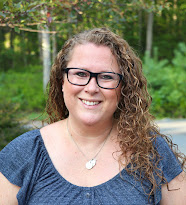 Autism Speaks is dedicated to promoting solutions, across the spectrum and throughout the lifespan, for the needs of individuals with autism and their families through advocacy and support; increasing understanding and acceptance of autism spectrum disorder; and advancing research into causes and better interventions for autism spectrum disorder and related conditions. To learn more about the mission and vision of of Autism Speaks, click here.
Autism Speaks is dedicated to promoting solutions, across the spectrum and throughout the lifespan, for the needs of individuals with autism and their families through advocacy and support; increasing understanding and acceptance of autism spectrum disorder; and advancing research into causes and better interventions for autism spectrum disorder and related conditions. To learn more about the mission and vision of of Autism Speaks, click here.
As part of their collective resources, they have compiled a comprehensive list of apps for students (and adults) with Autism, however there are many apps that can be used for students of varying abilities. Apps are listed in alphabetical order and can be filtered by the app function, by device platform, by age or can be searched using keywords or phrases. Additionally, you can sort apps by clicking the "Rating" link above that column. You can rate apps by first clicking on the app name to visit the app detail page. Then, below the description of the app, click on the number of stars for your rating of the app.
Here’s a quick tour of its main functions:
1. Search for an app using the drop down menus to select what you want it to do, the device you want to use and the age of the intended user. (See screen shots at left.)
2. Read the supporting evidence behind an app’s claimed uses and benefits. Just hover your cursor over the apps’ entry in the “Supporting Research” column (below left).
Please note: Few apps have been directly studied. What we’ve gathered are summaries of general research behind the broader claims being made about a type of app. Our intent is to give you the best, evidence-based background material to inform your choice. But this shouldn’t be construed as proof that any given app will perform as claimed.
Anecdotal = No specific or related scientific studies for this type of app.
Research = There are some related scientific studies, but no direct research support for this type of app or technology.
Evidence = There is solid or specific scientific evidence that this type of app or technology is helpful.
3. View an apps’ user/parent rating in the far right column.
4. Want to rate an app you’ve been using? Read comments from users? Click on an app’s name to visit its detail page. There you can access cost and user comments, as well as rate an app you’ve used by selecting one to five stars.
5. Have an autism app you'd like to add to the list? Comments you’d like us to post? To recommend a new app for the list, email a brief description including platform, cost, intended age group, any relevant research and the download link to FSDB@AutismSpeaks.org. You can also use this email to contribute your comments for an app already in our database.




























